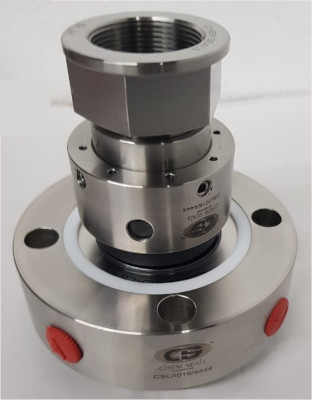

Essentially, an end-face mechanical seal is a device used on a rotating shaft to prevent fluids from escaping and contaminants from getting into the system. Basically, it prevents fluids from leaking out of an asset, normally a centrifugal pump. Stuffing boxes or seal chambers house these seals. Pump shafts connect to motors (for example, an electric motor) at the drive area.

This is a cartridge type mechanical seal
The majority of mechanical seals, with the exception of air seals, have two flat faces that are installed perpendicularly to the shaft. A flat face is mounted to the housing of the seal chamber. Primary sealing is provided by a rotating face. Axial mechanical force and fluid pressure maintain contact between the seal face materials. This maintains fluid in the pump and prevents leakage.
Process equipment uses three types of mechanical seals:
Cartridge - The end-face mechanical seal, which is positioned on a cartridge, is made up of a sealed assembly that includes a gland, sleeve, and hardware. The device can be preassembled and preset by the manufacturer as a consequence of a cartridge seal. When the manufacturer handles the installation and maintenance, it makes things easier. Depending on the needs of the application, cartridges may have one or two seals.
Component - End-face mechanical seals with a distinct rotating part and a fixed seat that install in a gland or housing are known as component mechanical seals. Installing and maintaining them is more difficult than cartridge seals since they are not preset. These must be installed and adjusted by trained experts.
Air seals are pneumatic devices that seal spinning shafts without touching them. Typically, these seals are used in dry powder or slurry applications. They use small volumes of air or inert gas to safeguard against product loss, pollutants, and contamination. To establish positive pressure and an effective seal, this air is throttled.